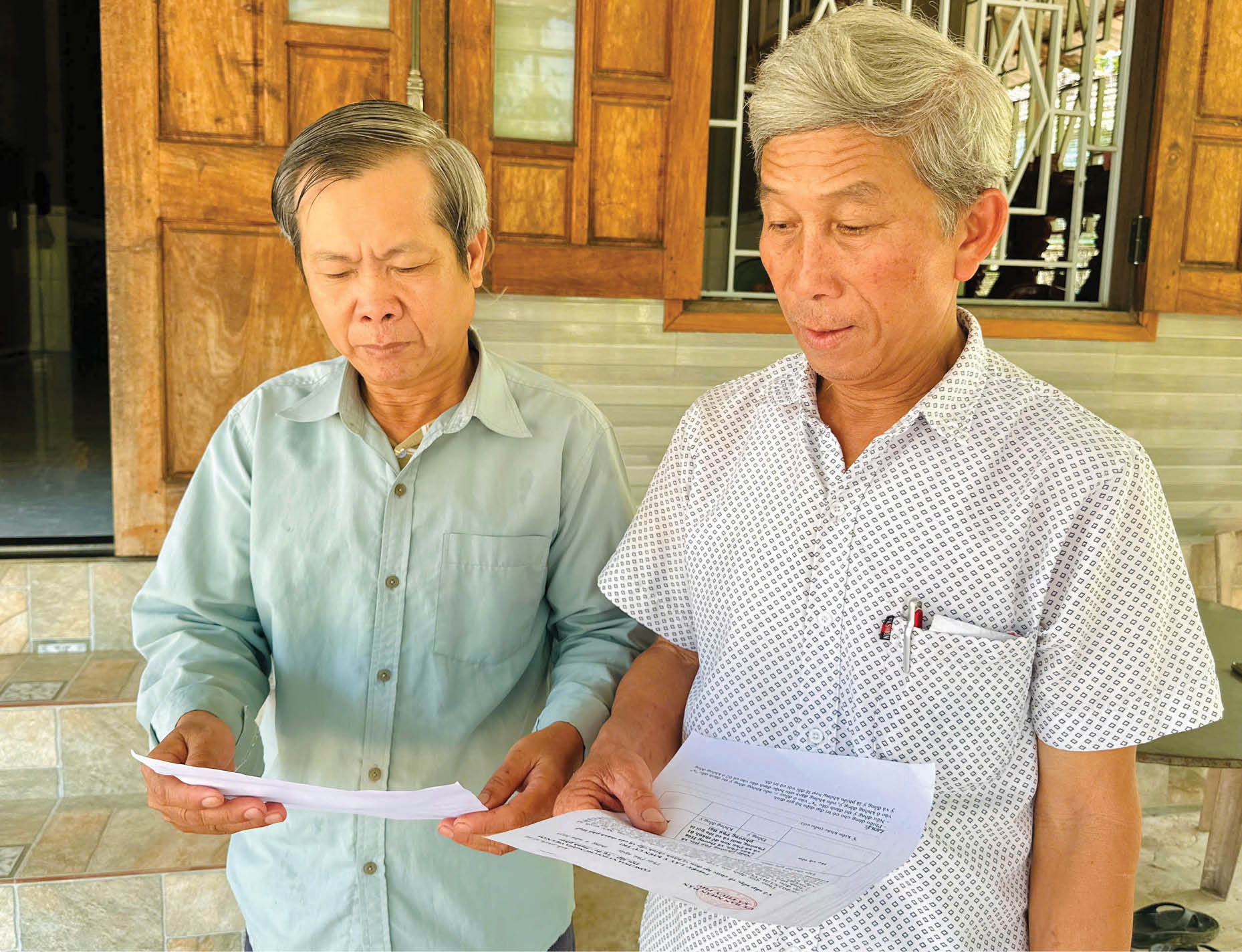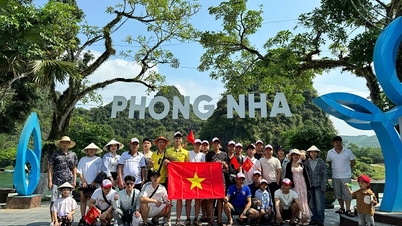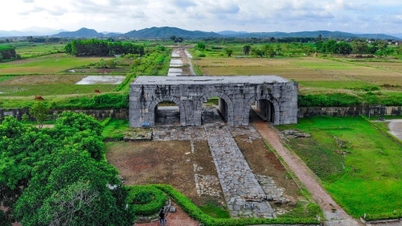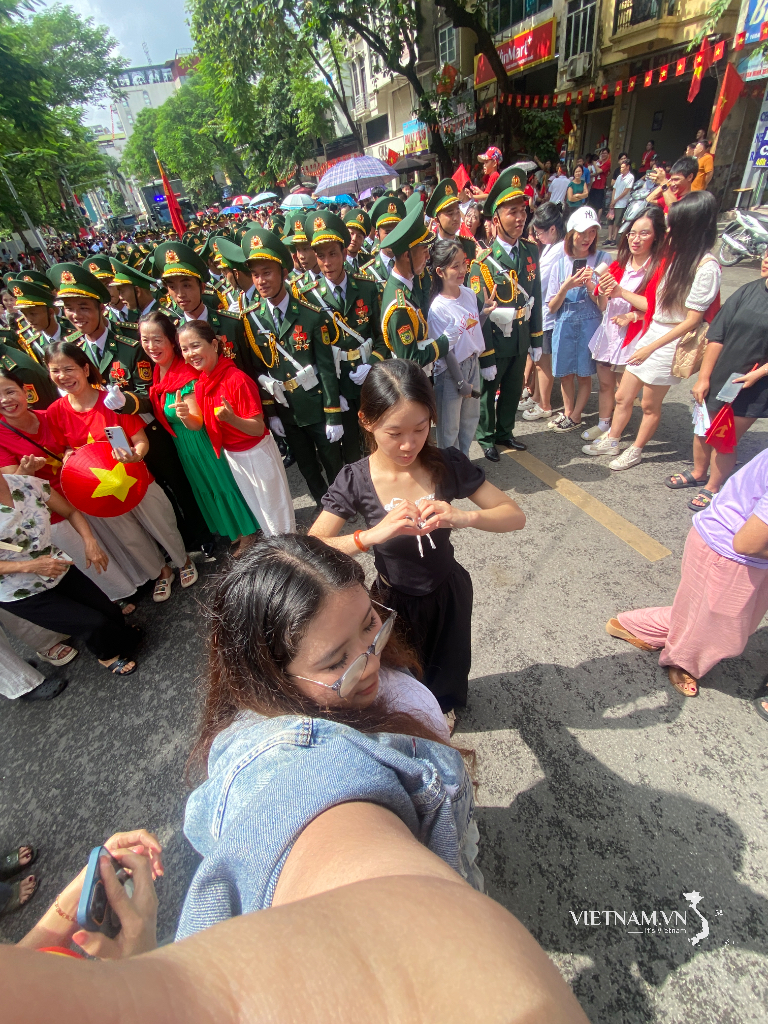 |
| Voters are concerned about the administrative names of communes after the merger. |
People need a strong government.
Mr. Le Van Duong (The My A residential group, Phong Phu ward, Phong Dien town) is knowledgeable about the mergers and separations of administrative units. Having served as Chairman of the People's Committee of Phong Hai commune (now Phong Hai ward, Phong Dien town) since the 1980s, Mr. Duong stated that merging administrative units is a process aimed at creating suitability for each stage of development. "Even now, the name Phong Hai is still used for a commune-level administrative unit. But after the merger, Phong Hai is expected to merge with Quang Cong and Quang Ngan (Quang Dien district) to become Phong Quang ward. I believe the new name is quite reasonable because it is a combination of the names of the localities," Mr. Duong said.
Mr. Tran Viet Giao (Giang Che village, Giang Hai commune, Phu Loc district) began his discussion on the Project for the Reorganization of Commune-level Administrative Units in Hue City (the Project) by saying: “It’s time for change, otherwise we will stagnate. People not only need officials who are close to them, but also officials who are competent, and a government that is quick and transparent.”
According to Mr. Giao, despite countless changes in the times, numerous mergers and divisions, and many changes in the names of administrative units, the traditional village and commune names deeply ingrained in the consciousness of generations still remain in many localities. "I think that the new names for administrative units are for governance and management purposes, while the names of villages and communes that weren't chosen will not disappear but will forever remain in the hearts of the people," Mr. Giao said.
Our observations show that over the weekend, many villages and residential areas mobilized residents to come to the community hall to participate in providing feedback and opinions. Simultaneously, local officials went to the grassroots level to listen to people's thoughts and aspirations, patiently explaining, publicizing, and informing about the plan to streamline administrative units at the commune level, moving towards a two-tiered government model. And from the voices and opinions of the voters, the seemingly dry and bureaucratic plan became more accessible, with the people at its center. Besides the majority of opinions agreeing, what still concerns people is not "who they will be merged with," but rather very specific questions: What will the new commune be called? Where will the headquarters be located? Will there be any inconvenience in traveling to complete paperwork?
Mr. Le Van Hieu (Thuy Phu commune, Huong Thuy town) shared: "We don't mind the conservative name of the commune. But the new name must be associated with tradition, reflect the identity of the land, and the new headquarters must be convenient for people when they need to do paperwork."
Beyond just the name change after the merger, many voters expressed further expectations. According to them, the merger is not just about streamlining the organization, but also an opportunity to innovate the way services are provided. "People don't need many communes anymore, they just need strong ones. We don't need a large number of officials, just people who work honestly and don't make people wait or travel a lot," Mr. Hieu said.
完善 organizational structure, creating momentum for development
By April 20th, localities across the city had essentially completed the consultation process, with a high percentage of voters agreeing with the proposal.
According to the plan, the development of the administrative unit rearrangement plan at the commune level has taken into account factors such as natural conditions, transportation infrastructure, and the distribution and organization of economic spaces to ensure the maximum utilization of the economic development potential and advantages of each locality, and to support each other in promoting the overall socio-economic development of the rearranged administrative unit. At the same time, careful consideration has been given to factors such as the management capacity and skills of local Party committees and authorities, the level of digital transformation and the application of information technology by local authorities and the people; ensuring national defense and security requirements, building a solid defense zone in key areas, islands, archipelagos, and border regions; preserving and promoting the historical, cultural, and ethnic traditions of each locality; and ensuring the unity and cohesion of the local community.
The plan also clearly states that the reorganization of administrative units should be linked to the reform and restructuring of the political system's organizational apparatus to be streamlined, effective, and efficient; to promote decentralization and delegation of power, and to strengthen the autonomy and accountability of local governments; to restructure and improve the quality of cadres, civil servants, and public employees; and to ensure that local governments at the commune level are close to the people, understand their needs, and serve them in the best possible way.
The rearrangement and reorganization of commune-level administrative units must ensure the preservation of history, traditions, culture, ethnicity, religion, beliefs, customs, and practices; geographical location, geographical and natural conditions, sub-regional and regional linkages; scale and level of economic development; national defense, political security, social order; transportation infrastructure and information technology…
According to Nguyen Van Phuong, Deputy Secretary of the City Party Committee and Chairman of the City People's Committee, after the reorganization, the new administrative units in Hue will have a streamlined, synchronized, and more efficient organizational structure. The newly reorganized communes and wards will also have a complete organizational structure, operating effectively and efficiently. Along with this, the staff of officials and civil servants will be reassigned and reorganized to improve quality, enhance professionalism, dedication, and closeness to the people. This is an opportunity for Hue to build a model grassroots government, putting the people at the center of service.
| According to the plan for rearranging and reorganizing commune-level administrative units, Hue City plans to rearrange 133 commune-level administrative units (including 48 wards, 78 communes, and 7 towns), reorganizing them into 40 new commune-level administrative units (including 21 wards and 19 communes), corresponding to a reduction of 93 units, achieving a streamlining rate of nearly 70%. |
Source: https://huengaynay.vn/chinh-polit-xa-hoi/theo-dong-thoi-su/dong-thuan-de-doi-thay-sap-nhap-de-phat-trien-152801.html



![[Photo] Prime Minister Pham Minh Chinh presides over a meeting on private sector economic development.](/_next/image?url=https%3A%2F%2Fvphoto.vietnam.vn%2Fthumb%2F1200x675%2Fvietnam%2Fresource%2FIMAGE%2F2025%2F12%2F20%2F1766237501876_thiet-ke-chua-co-ten-40-png.webp&w=3840&q=75)






























































































Comment (0)